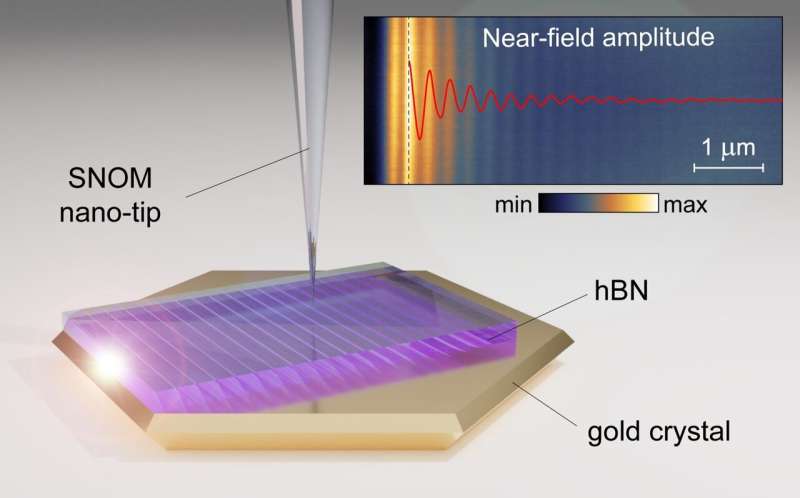Phys.org July 13, 2022
An international team of researchers (South Korea, Denmark, Switzerland, Japan, USA – University of Minnesota) used a highly sensitive scanning near-field optical microscope (SNOM) to directly measure the optical fields of the hyperbolic image phonon-polaritons (HIP) propagating in a 63 nm-thick slab of hexagonal boron nitride (h-BN) on a monocrystalline gold substrate, showing the mid-infrared light waves in dielectric crystal compressed by a hundred times. They showed that the phonon-polaritons in van der Waals crystals can be significantly more compressed without sacrificing their lifetime. Practically zero surface scattering and extremely small ohmic loss in gold at mid-infrared frequencies provided a low-loss environment for the HIP propagation. The HIP mode probed by the researchers was 2.4 times more compressed and yet exhibited a similar lifetime compared to the phonon-polaritons with a low-loss dielectric substrate, resulting in a twice-higher figure of merit in terms of the normalized propagation length. According to the researchers their work provides a breakthrough for the practical applications of ultra-thin dielectric crystals in next-generation optoelectronic devices based on strong light-matter interactions at the nanoscale…read more. Open Access TECHNICAL ARTICLE

Nano-tip is used for the ultra-high-resolution imaging of the image phonon-polaritons in hBN launched by the gold crystal edge. Credit: Jang Research Group